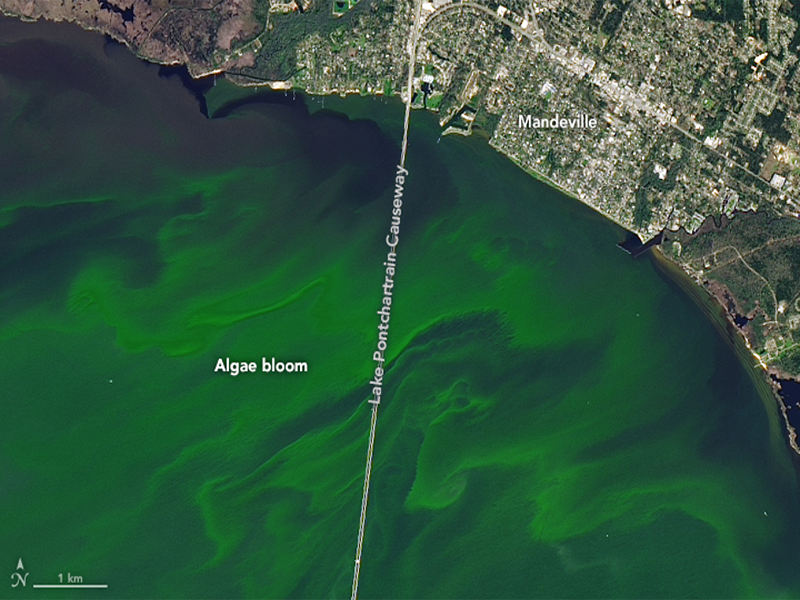Tulane Researcher Studies Harmful Algal Blooms in Lake Pontchartrain

Arial photo of an Algae Bloom in Lake Pontchartrain (Photo courtesy of cyanotracker)
Tulane researcher Samendra Sherchan, an assistant professor in the Environmental Health Sciences Department at Tulane's School of Public Health and Tropical Medicine, has been awarded a grant by the National Oceanic and Atmospheric Administration and LA Sea Grant to study the occurrence of toxic cyanobacterial blooms (CyanoHABs) in Lake Pontchartrain.
Frequent Bonnet Carre Spillway openings lead to the release of large volumes of nutrient-rich Mississippi River into Lake Pontchartrain and provide favorable conditions for the growth of algae (cyanoHABs). The algae can be toxic and the low oxygen levels created by dying algae can push aquatic life away from these areas. The blooms need to be monitored and mitigated to reduce their negative effect on the environment.
The grant will provide funding for researchers from Tulane University and Louisiana State University to develop a satellite remote sensing-assisted, artificial intelligence-based early warning and decision-support system, called SAM3HAB (Source Area-based Monitoring, Modeling and Mitigation of Harmful Algal Blooms), for forecasting and mitigating the occurrence (timing and spatial distribution) of CyanoHABs in Lake Pontchartrain.
In this collaborative study, researchers aim to examine the association between environmental conditions, nutrients, and toxin gene quantity. Sherchan says the results will help us identify the critical source areas that contribute to excessive nutrient loadings and determine the environmental conditions favorable for CyanoHABs to flourish.
"CyanoHABs are increasing in frequency and have become a major threat to the environment and human health. Our goal in this context is to provide an early warning decision support tool for forecasting CyanoHABs, ” Sherchan said.
Photo of Dr. Samendra Sherchan
